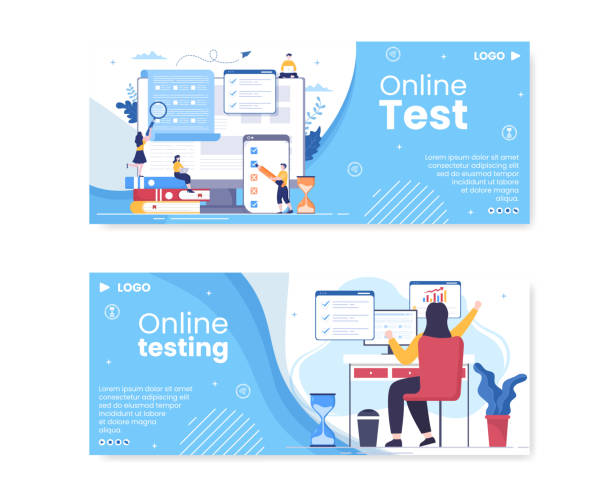Introduction to the Concept of Custom Website Design and Its Importance
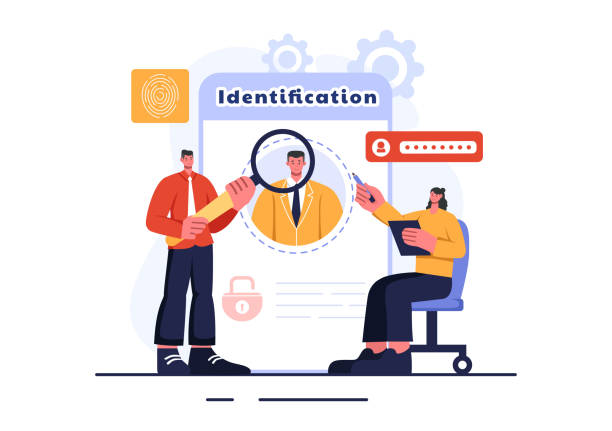
#Custom_Website_Design In the current digital age, having an effective and distinctive online presence is of paramount importance for every business and even individuals.
Among the numerous options for creating a website, the concept of custom website design emerges as a powerful and forward-looking solution.
Unlike ready-made templates or general platforms that impose limitations in terms of personalization and functionality, a custom website means building a completely unique digital platform that is designed and coded from scratch based on your exact brand needs, goals, and visual identity.
This approach gives you complete freedom to implement every feature and function essential for achieving your business goals.
This section aims to provide an explanatory and educational overview, familiarizing you with the nature and fundamental benefits of this type of design, taking the first step towards understanding it.
#Digital_Competitive_Advantage_and_Flexibility The importance of the custom website design approach becomes apparent when you consider the long-term growth and development of your business in the online space.
A custom website not only guarantees a unique and professional appearance for your brand but also offers significant functional superiority.
Higher loading speed, improved security, and infinite scalability are among its main advantages.
You can create a unique and customized user experience (UX) for your audience, leading to increased engagement, conversion rates, and ultimately customer loyalty.
This platform is adaptable to any changes in marketing strategies and new technologies, without requiring costly and time-consuming reconstructions.
A personalized website allows you to outmaneuver the competition and establish a strong position in the digital market, precisely tailored to your industry’s needs.
This smart investment will form the backbone of your digital presence for years to come.
#Key_Role_in_Branding_Identity In addition to technical aspects, custom website design plays a vital role in strengthening your identity and branding.
Every design element, from color schemes and fonts to how users interact with the website, can reinforce your brand message and create a unique impression in the audience’s mind.
This deep personalization enables the creation of a cohesive visual narrative consistent with your business’s core values.
This visual and functional distinction not only differentiates your website from competitors but also increases credibility and trust among visitors.
Consequently, a custom website acts as the beating heart of your digital marketing strategy and will pave the way for sustainable growth and success in the online market.
This approach allows you to present a precise and desired image of your business to the world.
Is your e-commerce site ready to attract maximum customers and increase sales? Rasaweb transforms your online business with modern and efficient e-commerce website design.
✅ Increased speed and improved SEO
✅ Excellent user experience on mobile and desktop⚡ Get free e-commerce website design consultation from Rasaweb!
Why Custom Website Design is the Best Choice for Your Business?

#Advantages_of_Custom_Websites_Compared_to_Ready-made_Templates Choosing the right path for online presence is one of the key decisions for any business in today’s fast-paced world.
One of the most important questions is whether to use a ready-made Content Management System (CMS) with pre-built templates or opt for a custom website design.
This section, with an analytical and inquisitive approach, delves into the reasons why investing in a custom website can be the smartest decision to ensure your business’s long-term success.
Have you ever considered what obstacles the limitations of a ready-made solution create on the path to your business’s unique innovation and growth? A custom website allows you to turn exactly what you envision into reality, without any compromise.
#Optimal_Performance_and_Unparalleled_Security One of the most prominent advantages of custom websites is their high performance and speed.
Unlike websites built with general CMSs that are often burdened with extra code and unnecessary plugins, custom websites only include the code essential for your required functionality.
This optimization leads to very high loading speeds, which not only improves user experience but also plays a vital role in SEO rankings.
In terms of cybersecurity, custom websites typically suffer from fewer vulnerabilities, as they are not common targets for hackers and public security loopholes are less frequently found in them.
This feature is critically important for businesses dealing with sensitive customer information or financial transactions.
Endless scalability means that your website can grow alongside your business, accommodating new features easily without needing a platform change.
This forward-looking flexibility defines the true value of a custom website design.
#Return_on_Investment_and_Unique_Branding_Identity Although the initial cost of custom website development might seem higher than using ready-made templates, the long-term return on investment is often much greater.
A carefully designed custom website can significantly boost customer conversion rates, reduce marketing costs, and help you surpass your competitors by creating an unparalleled user experience.
Furthermore, a custom website allows you to fully reflect your brand identity without any limitations.
This means building a platform that not only performs exceptionally but also perfectly aligns with your business’s aesthetics, message, and values.
Ultimately, a custom website design is an investment in your business’s future, whose benefits will manifest in the form of credibility, sustainable growth, and lasting competitive advantage, enabling you to shine brightest in today’s digital market.
Key Elements in Successful Custom Website Design
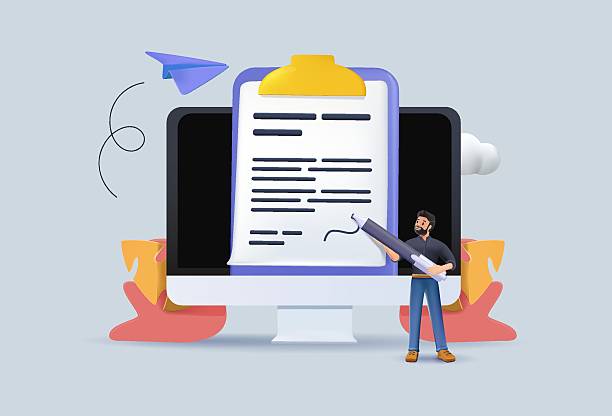
#Main_Features_of_Custom_Websites For a custom website design to be truly effective and successful in achieving its intended business goals, special attention must be paid to its key elements.
These components not only contribute to the website’s aesthetic appeal and visual attractiveness but also significantly improve its efficiency, security, and overall user experience.
This section, with a specialized and guiding approach, examines the details of these essential components to assist you in creating a powerful and efficient digital platform.
Understanding and correctly implementing these elements from the very beginning of the design process is crucial for achieving the best results.
#User_Experience_and_User_Interface_Foundation_of_Success The first and perhaps most important element is the optimal combination of User Interface (UI) and User Experience (UX).
The website should be designed in a way that navigation is simple and intuitive, allowing users to easily access the information they need.
Its content should also be presented in a visually appealing and readable manner to encourage users to stay and explore further.
Responsive Design is also non-negotiable; your website must display correctly and with optimal performance on all devices, including mobile, tablet, and desktop.
High loading speed, precise image optimization, and clean, optimized code are also crucial for retaining user attention and improving SEO rankings.
Furthermore, website security, through the use of HTTPS protocol, implementation of strong firewalls, and advanced security measures to protect user data, must be a priority.
Integration with digital marketing tools, online payment systems, and analytics tools are also important features of a successful personalized website, allowing you to accurately monitor and improve your website’s performance.
#Scalability_and_Quality-Oriented_Content Scalability means that your website should have the capacity to grow and develop alongside your business.
This includes the ability to add new features and functionalities, as well as the capacity to handle increased user traffic without performance degradation.
A custom Content Management System (CMS) allows you to easily update and manage your website’s content without extensive technical knowledge.
High-quality and SEO-optimized content is also a key element; this content must be relevant, engaging, and valuable to your audience and help attract organic traffic.
Finally, technical support and regular maintenance are essential to ensure the website’s smooth and uninterrupted operation.
This set of elements provides a solid framework for building a successful and sustainable custom website design that can serve as a strategic asset for your business.
A table of essential features is presented below:
| Feature | Description |
|---|---|
| Responsive Design | Correct and optimal display of the website on all devices and screen sizes, from mobile to desktop, to provide a consistent user experience. |
| High Loading Speed and Optimal Performance | Optimization of code, images, and server resources to ensure fast page loading, which positively impacts both user experience and SEO ranking. |
| Comprehensive Security and Data Protection | Use of HTTPS protocol, firewall implementation, data encryption, and other advanced security measures to protect against cyber attacks and maintain user privacy. |
| SEO Friendliness and Search Engine Optimization | Clean code structure, proper use of keywords, meta tags, structured data, and quality content to achieve high rankings in search engine results. |
| Scalability and Flexibility | Designing the website infrastructure so that it can easily adapt to business growth, increased traffic, and the addition of new features without requiring a complete rebuild. |
| Custom Content Management System (CMS) | User-friendly and dedicated admin panel for updating, editing, and adding content to the website without requiring programming knowledge. |
Step-by-Step Process of Building a Custom Website
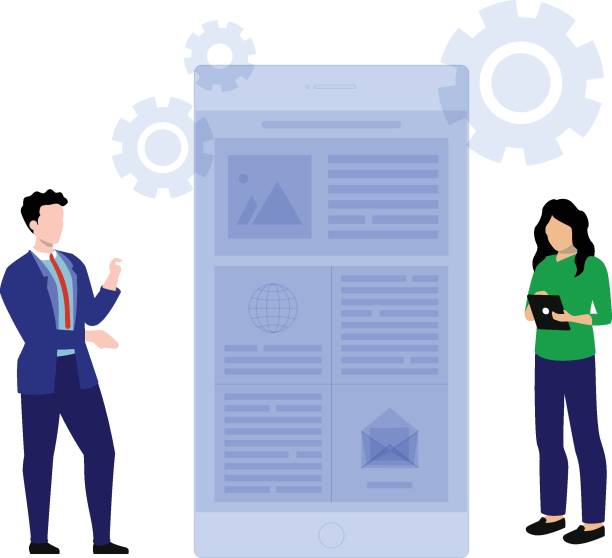
#Custom_Web_Development_Phases Building a custom website design is a complex and multi-stage process that requires precise planning, continuous communication, and close collaboration between the client and the development team.
Each step in this process plays a crucial role in the project’s ultimate success and ensures that the final product aligns exactly with business expectations and goals.
This section, with a guiding and explanatory approach, describes the main steps of this process from inception to deployment and support, providing you with a complete understanding of how the project progresses and your role in it.
Understanding these stages is key to managing expectations and effectively planning resources.
#Planning_and_Initial_Design_Phase The process usually begins with the “Discovery and Planning” phase.
In this phase, the development team conducts intensive meetings with the client to gather comprehensive information about business goals, target audience, functional requirements, and specific desired website features.
This stage also includes competitor analysis and content strategy definition.
Subsequently, the “UI/UX Design” phase (User Interface and User Experience) begins.
In this step, wireframes (initial structural blueprints) are first created, followed by mockups (detailed visual designs).
Finally, interactive prototypes are built, allowing the client to interact with the user flow and website appearance before any actual coding, and provide necessary feedback.
This feedback is crucial for refining and improving the design before entering the development phase and prevents waste of time and cost in later stages.
The goal of this phase is to create a clear visual and functional roadmap for custom website development.
#Development_Deployment_and_Support_Phase After final design approval, the “Development Phase” begins.
This phase is divided into two main parts: Backend development, which includes building server-side logic, database, and APIs for connecting different website components; and Frontend development, which involves coding the visual and interactive parts of the website using languages like HTML, CSS, and JavaScript.
Throughout development, comprehensive testing and evaluation are continuously performed to identify and fix bugs and ensure proper website functionality.
After development and testing are complete, the website is optimized for search engines (SEO) and deployed on a suitable server.
The final step is “Post-launch Support and Maintenance,” which includes performance monitoring, applying security and technical updates, and resolving any potential issues to ensure continuous and uninterrupted website operation.
This organized and comprehensive process guarantees a successful and sustainable custom website design that best meets your business needs.
Do your e-commerce site visitors leave before making a purchase? Don’t worry anymore! With Rasaweb’s professional e-commerce website design services, solve the problem of converting visitors to customers permanently!
✅ Significant increase in conversion rates and sales
✅ Unique and engaging user experience
⚡ Contact us now for a free consultation!
Technologies and Tools Used in Custom Web Development

#Custom_Web_Technologies_and_Right_Choice When it comes to custom website design, choosing the right technologies and tools is of paramount importance.
These choices not only affect the website’s performance, security, and scalability but also influence the development process speed, long-term maintenance costs, and future capabilities of the website.
This section, with a specialized and educational approach, introduces some of the most common, powerful, and up-to-date technologies used in custom website development.
Familiarity with these tools and understanding their applications can greatly assist you in making more informed decisions and choosing the best path for your custom website project.
#Programming_Languages_and_Frontend_and_Backend_Frameworks For frontend development (the user-visible part), languages like HTML (markup language for structuring content), CSS (for styling and visual appearance), and JavaScript (for creating interactivity and dynamism) form the foundation.
JavaScript frameworks and libraries such as React.js, Angular, and Vue.js are also very popular for building complex, dynamic user interfaces and Single Page Applications (SPAs), offering a smooth and fast user experience.
In the backend (server-side logic), languages like PHP (with frameworks like Laravel and Symfony), Python (with Django and Flask), Node.js (with Express.js), and Ruby (with Ruby on Rails) are common choices.
The choice of backend language and framework depends on project complexity, scalability requirements, and, of course, the development team’s expertise.
Each of these languages and frameworks has a large ecosystem and support community that facilitates development.
#Database_Server_and_Helper_Tools For storing and managing website data, database management systems like MySQL, PostgreSQL (for relational databases), and MongoDB (for NoSQL databases) are among the widely used options.
The choice of database type depends on the data structure and functional requirements of the website.
For website hosting, cloud services like Amazon Web Services (AWS), Google Cloud Platform (GCP), and Microsoft Azure offer scalable and reliable solutions.
Additionally, version control tools like Git (for managing code changes) and project management systems like Jira or Trello play an important role in organizing the development process.
Using these advanced tools and technologies enables development teams to work more efficiently, organized, and with higher quality on custom web development projects, delivering the final product in the shortest possible time and with optimal performance.
Search Engine Optimization (SEO) in Custom Website Design
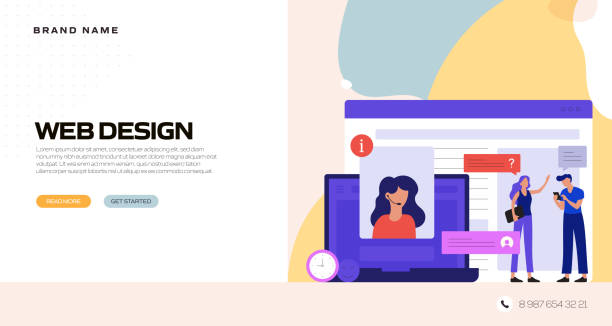
#Custom_SEO_and_Its_Importance In the highly competitive online world, simply having a beautiful and flawlessly performing custom website design is not enough; it must also be ensured that this website is correctly found and displayed in top results by search engines like Google, Bing, and Yahoo.
Search Engine Optimization (SEO) in custom website design is of extreme importance and should be considered from the very beginning as an integral part of the development process.
This section, with a specialized and guiding approach, shows you how you can optimize your custom website to achieve the best SEO results and increase online visibility.
#Technical_and_Content_SEO_in_Custom_Websites One of the greatest advantages of custom website design is complete and precise control over all aspects of the website’s code and structure, allowing for deep technical optimization.
This includes the use of clean, meaningful, and optimized code that is understandable to search engine bots, a logical and optimized URL structure, and very high loading speed, which are considered important ranking factors by Google.
Correct implementation of structured data (Schema Markup) also helps search engines better understand your content and display it in special results (Rich Snippets).
In terms of content, producing high-quality, unique, and valuable content that addresses the audience’s needs and naturally incorporates relevant keywords is crucial.
Furthermore, a correct internal linking strategy (connecting related pages) and external linking (acquiring backlinks from reputable sites) helps increase the website’s credibility and authority.
#User_Experience_and_Mobile-First_SEO Responsive Design (Mobile-First Design) is crucial for SEO, as Google prioritizes websites that perform well on mobile devices and considers mobile user experience a significant ranking factor.
A custom website allows you to implement responsive design from scratch and in the best possible way.
Furthermore, optimizing loading speed for mobile, easy navigation on touch screens, and using legible fonts in small sizes all contribute to improving mobile SEO.
Continuous monitoring of SEO performance through tools like Google Search Console and Google Analytics, and implementing necessary changes based on data, is crucial for maintaining and improving rankings.
Ensuring that your custom website is SEO-optimized means increased visibility, attracting more organic traffic, and ultimately, sustainable growth for your business in the online space.
This will be a long-term investment in your digital success.
Maintenance, Updates, and Future-proofing in Custom Websites
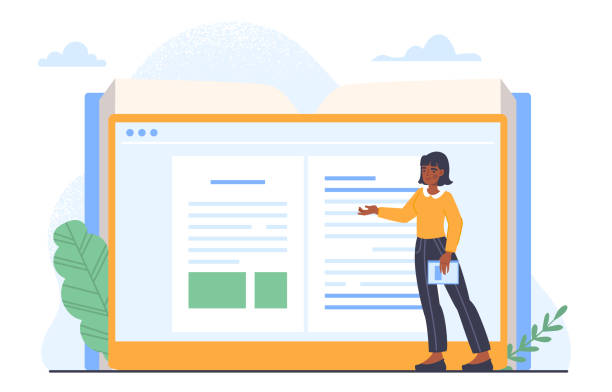
#Importance_of_Custom_Website_Maintenance_and_Support Although custom website design is a significant achievement, it is by no means the end of the work.
Like any other valuable asset, a custom website also requires regular maintenance, periodic updates, and strategic future planning to always perform optimally, remain secure, and keep pace with the latest technological advancements.
Neglecting these aspects can lead to performance degradation, security vulnerabilities, and loss of competitive advantage.
This section, with a news-oriented and guiding approach, comprehensively examines the importance and various aspects of long-term maintenance and management of custom websites, helping you devise effective strategies to maintain the dynamism and security of your digital platform.
#Software_Updates_and_Cybersecurity Software and security updates for the platform, frameworks, libraries, and plugins used on the website are absolutely vital.
These updates not only help address known security vulnerabilities but also add new functionalities and improve the overall performance of the website.
Failure to apply updates can make your website vulnerable to cyber attacks, including data breaches and malware.
Regular and automatic backups of website data and files are also essential to prevent data loss in case of unforeseen incidents (such as server failure or cyber attacks).
Furthermore, continuous monitoring of website performance, including loading speed, server response time, and detection of potential errors, helps identify and resolve issues before they affect user experience.
A proactive maintenance plan will guarantee the stability and security of your custom web development.
#Importance_of_Continuous_Optimization_and_Future-proofing With the rapid advancement of web technologies and changes in search engine algorithms, the need for website optimization and performance improvement is also an ongoing process.
This includes content updates to maintain freshness and relevance to the audience, optimizing speed and performance to comply with new web standards, and ensuring compatibility with new browsers and smart devices.
Many web development teams offer comprehensive support and maintenance packages after completing custom website design, which include services such as 24/7 monitoring, emergency bug fixes, applying updates, and technical consultations for future developments.
Planning for the future and anticipating upcoming technology trends (such as AI and Web 3.0) also helps you develop your website in a way that remains cutting-edge and minimizes the need for costly rebuilds in the future.
Investing in maintenance is an investment in the longevity and sustainable success of your website.
A table of common maintenance tasks is presented below:
| Task | Description | Recommended Frequency |
|---|---|---|
| Software and Security Updates | Applying new updates for frameworks, libraries, plugins, and server operating systems to address vulnerabilities and improve performance. | Monthly or Quarterly |
| Data Backup | Creating full and partial backups of the database and all website files for recovery in case of issues. | Daily or Weekly |
| Security and Performance Monitoring | Regular scanning for malware and vulnerabilities, monitoring suspicious traffic, and checking server response time and loading speed. | Continuous (with tools) and Monthly (manual) |
| Database and Code Optimization | Cleaning and optimizing the database, and reviewing and improving website code to increase efficiency and speed. | Quarterly or Annually |
| Content Update and Management | Adding new content, updating old content, and ensuring the accuracy of information and links. | As needed and per content strategy |
| Browser and Device Compatibility Check | Testing the website across different browsers and devices to ensure correct display and flawless performance. | Quarterly |
Successful Case Studies of Custom Website Design
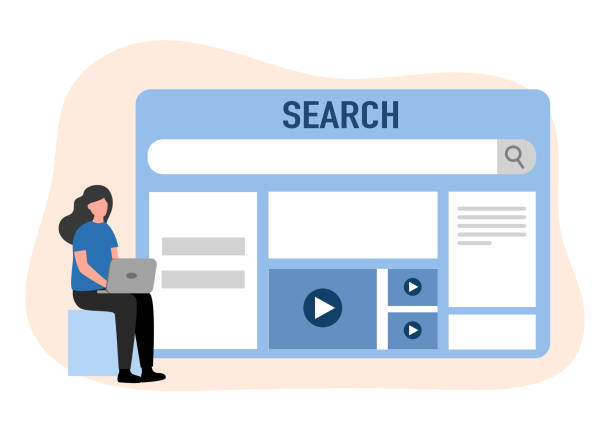
#Custom_Website_Success_Stories Observing practical and successful examples of custom website design can be the best way to understand the true potential and benefits of this approach.
These stories are not only inspiring but also clearly demonstrate how investing in a fully customized digital platform tailored to a business’s unique needs can lead to significant and differentiating results.
This section, with an engaging and analytical approach, examines several real-world case studies where businesses, by leveraging the power of a custom website, have been able to achieve their goals and thrive in a competitive market.
These analyses show how flexibility and complete control over design and functionality lead to the creation of real value.
#Prominent_Examples_from_Various_Industries For example, a startup in the fintech sector, with a critical need for a highly secure platform with complex transaction processing capabilities, was able to implement a system using custom web development that not only met all legal and security requirements with the highest global standards but also provided an exceptionally smooth and flawless user experience for its customers.
This led to rapid user acquisition, increased investor confidence, and ultimately, exponential company growth in a short period.
Another case could be a large e-commerce store that, using a custom website design, was able to optimize its inventory management system, personalized offers based on user behavior, and payment process in such a way that conversion rates and customer satisfaction significantly increased.
The ability to integrate with internal systems and conduct deep data analysis allowed this company to optimize its sales strategies in real-time.
#Tangible_Results_and_Long-term_Effects In another example, a non-profit organization used a custom website design to create a platform for fundraising and managing its projects.
This platform, with a simple user interface and transparent reporting capabilities, successfully gained public trust and significantly increased donations.
These websites, considering their unique needs and specific challenges, implemented entirely customized solutions that would have been impossible with ready-made templates or general CMSs.
These examples clearly emphasize how complete freedom in design and development allows businesses to create innovative and unique solutions for their challenges, gain a sustainable competitive advantage, and surpass their competitors.
These case studies effectively illustrate the unparalleled power and potential of custom websites and demonstrate the true value of investing in a personalized website.
Is your current e-commerce site design causing you to lose customers and sales?
Rasaweb is your solution with modern and user-friendly e-commerce website designs!
✅ Significant increase in conversion rates and sales
✅ Building strong branding and gaining customer trust
⚡ Get free e-commerce website design consultation from Rasaweb!
Cost Estimation and Investment in Custom Website Design
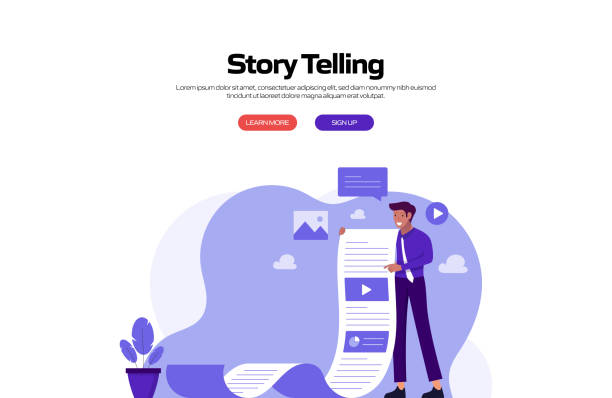
#Custom_Web_Development_Costs_and_Long-term_Value One of the most important questions that arises for many businesses when considering the option of custom website design relates to its cost.
At first glance, investing in a custom website might seem more expensive than using ready-made templates.
However, with a deeper look and by considering unique needs, long-term goals, and return on investment, it can be understood that this approach can be much more cost-effective and profitable in the long run.
This section, with an analytical and inquisitive approach, addresses the factors influencing cost and how to estimate the investment in a custom website.
What factors affect the final costs, and how can the best return on investment be achieved from this strategic project?
#Factors_Affecting_Custom_Website_Price The cost of custom website design depends on various and numerous factors, each of which can significantly impact the final price.
These factors include the complexity of required features and functionalities (such as advanced online payment systems, integration with CRM or ERP software, complex inventory management systems, user portals with various access levels), the quality and complexity of UI/UX design (degree of visual and interactive personalization), the volume of content and data to be managed, as well as the experience, expertise, and geographical location of the development team.
Simpler websites with more limited functionalities will naturally cost less, while large and complex projects with high security requirements, heavy traffic, and innovative features require significant investment.
Furthermore, the choice of backend and frontend technologies, as well as the need for cloud hosting or dedicated servers, also impacts the final price.
#Return_on_Investment_and_Long-term_Added_Value It is crucial to note that the initial cost of custom website design is a long-term investment in your business’s digital infrastructure.
A custom website, due to its inherent scalability and flexibility, can accompany your business growth and eliminate the need for costly and complete website rebuilds in the future.
Additionally, better SEO performance, higher loading speed, optimized user experience, and unparalleled customization capabilities can lead to a significant increase in conversion rates, acquisition of new customers, and consequently, a faster return on investment.
Ultimately, the added value of a custom website manifests not only in customer acquisition and sales growth but also in brand strengthening, creation of a sustainable competitive advantage, and provision of a unique platform for future innovations.
Therefore, costs should be viewed as a strategic investment for sustainable success, whose benefits over time will far outweigh the initial expenditures.
Future Trends in Custom Website Design and Development

#Future_of_Web_Development_and_Custom_Websites The world of web design and development is rapidly changing and evolving, with new technologies and approaches emerging daily.
For businesses and individuals planning custom website design or currently owning a custom website, awareness of these future trends is of paramount importance.
Understanding these trends can help you prepare your website for the future and maintain your competitive advantage in digital markets.
This section, with an explanatory and news-oriented approach, examines some of the most important emerging trends and pioneering technologies that will shape the future of custom websites and revolutionize how we interact with the online space.
#Artificial_Intelligence_Augmented_Reality_and_Immersive_Experiences One of the most prominent trends is the deeper integration of Artificial Intelligence (AI) and Machine Learning (ML) into websites.
These technologies can be used for unprecedented user experience personalization, automatic content optimization, intelligent chatbot provision, and even predicting user behavior.
Augmented Reality (AR) and Virtual Reality (VR) are also gradually making their way into websites, especially in areas like e-commerce (for virtual product try-ons) and education (for interactive learning experiences).
These technologies help create more immersive and engaging user experiences that go beyond merely visual interaction.
Furthermore, the emphasis on cybersecurity and data privacy will become even more crucial, and websites must use more advanced security protocols and privacy-preserving approaches like blockchain to ensure user trust.
These developments will transform the future landscape of custom web development.
#Progressive_Websites_and_Minimalist_Designs_Future_Web_Accessible Other trends shaping the future of custom website design and development include the expansion of Progressive Web Applications (PWAs).
These websites offer a combination of the best features of web and mobile applications, including installability on the home screen, offline functionality, and push notifications, providing an app-like user experience without needing to download from app stores.
Furthermore, the trend towards more minimalist and user-friendly designs will continue, focusing on speed, simplicity, and efficiency to keep content at the center of attention.
Increased use of micro-interactions and CSS-based animations to enhance user engagement and visual appeal is also another important trend.
Ultimately, custom website design will move towards creating more immersive, intelligent, and secure user experiences, providing businesses with the opportunity to stay ahead of the competition through continuous innovation and best meet their users’ needs.
Frequently Asked Questions
| Question | Answer |
|---|---|
| What is custom website design? | The process of designing and implementing a website from scratch based on the unique needs, brand, and goals of a business or individual, without using ready-made templates. |
| What are the main advantages of custom website design? | Includes unique visual identity, optimal and fast performance, endless customization capabilities, higher security, easy scalability, and better optimization for SEO. |
| Which businesses most need custom website design? | Businesses that require complex or unique functionalities, have a strong brand and want to fully reflect their visual identity, or are planning for future growth and development. |
| Is custom website design more expensive than using a template? | Yes, custom website design usually costs more than using ready-made templates due to the greater time and expertise involved. |
| What stages does the custom website design process usually include? | It typically includes needs analysis, planning and strategy, User Interface and User Experience (UI/UX) design, development (frontend and backend programming), testing and debugging, and finally launch and support. |
And other advertising services by Rasaweb Advertising Agency
Smart Advertising Campaign: Designed for businesses seeking to improve SEO rankings through intelligent data analysis.
Smart Google Ads: Professional optimization for campaign management using SEO-driven content strategy.
Smart Link Building: An effective tool for digital branding with precise audience targeting.
Smart Marketing Automation: An effective tool for user engagement with precise audience targeting.
Smart SEO: An innovative service for increasing website traffic through SEO-driven content strategy.
And hundreds of other services in the field of internet advertising, advertising consultation, and organizational solutions
Internet Advertising | Advertising Strategy | Advertorial
Resources
Responsive Website Design Tutorial
Best CMS for Your Site
SEO Principles for Website Design Beginners
Choosing the Right Host for Web Design
With Rasaweb Afarin, your business shines at its peak! With our expertise in personal website design and a wide range of digital marketing services, we create a powerful and impactful online presence for you.
📍 Tehran, Mirdamad Street, Next to Central Bank, Southern Kazeroun Alley, Ramin Alley, No. 6

